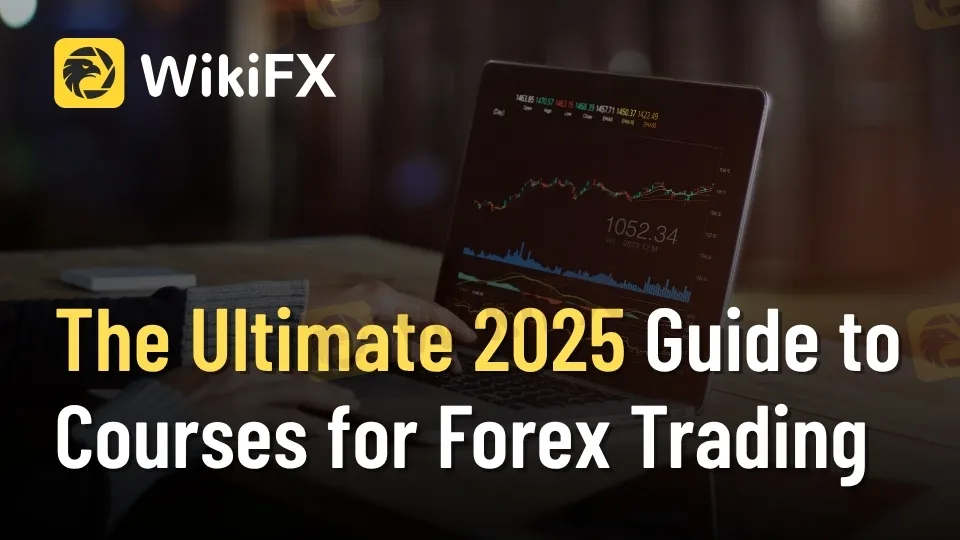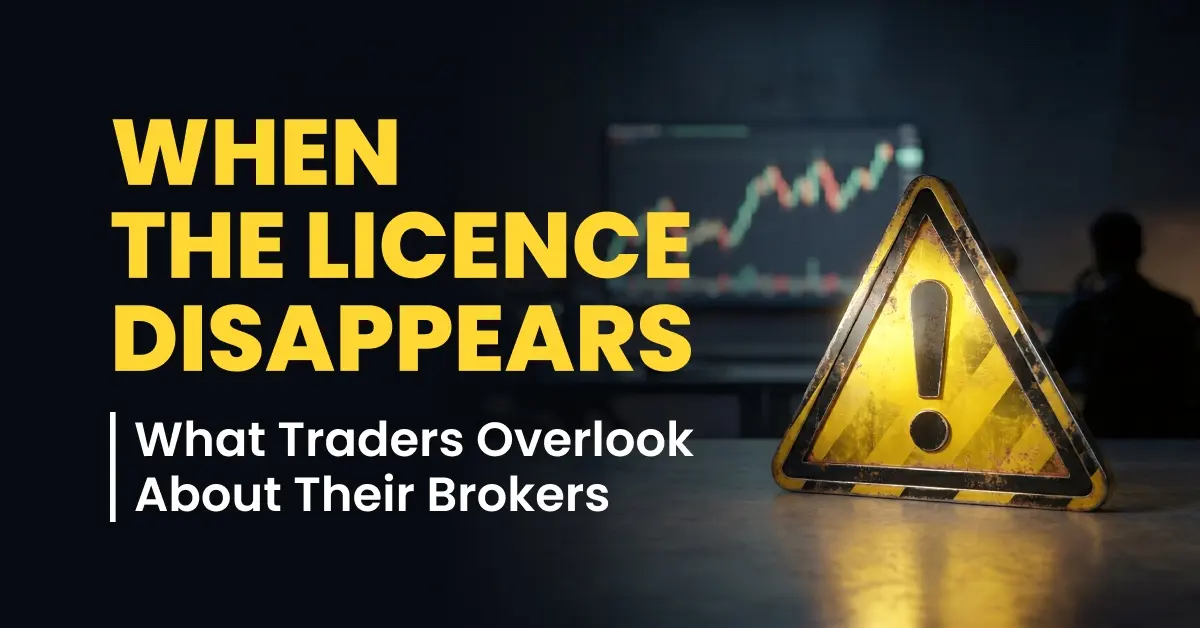The Ultimate 2025 Guide to Courses for Forex Trading
Abstract:Know the best courses for forex trading in 2025. Learn proven strategies, risk management, and trading psychology to trade forex profitably and confidently.

Theres a reason traders talk about “tuition to the markets.” You either pay it through avoidable mistakes, or you invest up front in learning how forex actually works before risking capital. A good course will not only shorten the learning curve, it will also spare you from the common traps—over-leveraging, emotional decision-making, and strategy-hopping—that quietly drain accounts. If the goal is to trade currencies deliberately, to spot better entries, to set tighter stops with purpose, and to stay consistent when the market turns messy, structured education is the most direct route.
This guide digs into the best courses for forex trading in 2025, from beginner-friendly programs to advanced mentorships, plus certificate paths, free options, and what to look for in a credible provider. It also breaks down the topics that matter—price action, risk management, trading psychology, fundamental catalysts, and platform skills—so you can judge whether a course is truly practical or just glossy marketing.
Why Forex Education Matters More Than Ever
Forex looks simple on the surface: two currencies, a leveraged position, and a price that moves with macroeconomic news. But that simplicity hides complexity. Spreads widen at the worst times. News whipsaws price just as you place a trade. A setup that looked clean on the H1 chart evaporates when you zoom out to D1. Traders who last beyond the early months tend to have three things in common:
- They understand their edge. Instead of throwing indicators at a chart, they can explain why their setup should work and when its likely to fail.
- They respect risk. They size positions rationally, use stop-losses by design—not fear—and accept small losses as part of doing business.
- They work on themselves. Biases like overconfidence and loss aversion don‘t disappear; they’re managed with rules, journaling, and awareness.

A serious forex course creates structure around those habits. You‘ll learn the language (pips, lots, spreads, swaps), the tools (MT4/MT5, TradingView), the process (from watchlist to trade plan), and the discipline to keep your emotions from dictating entries and exits. That’s where courses earn their keep.
Types of Forex Trading Courses
There isnt one “best” course for everyone. The right choice depends on where you are now and how you prefer to learn.
Beginner courses
- What they cover: forex basics, currency pairs, brokers and platforms, leverage mechanics, order types, and the foundations of technical and fundamental analysis.
- Why they matter: they replace uncertainty with clarity. You‘ll know what you’re seeing on a chart, what youre risking per pip, and how to practice on a demo before going live.
Intermediate courses
- What they cover: strategy development, price action and structure, indicators (RSI, MACD, moving averages), confirmation, multi-timeframe analysis, and trade management (scaling in/out).
- Why they matter: they turn “information” into a repeatable approach—with rules for entries, stops, targets, and invalidation.
Advanced courses
- What they cover: institutional concepts, order flow and liquidity, advanced price action, algorithmic thinking, higher-timeframe confluence, news trading frameworks, backtesting, and performance analytics.
- Why they matter: they help you refine edge, reduce noise, and add professional-level risk practices.
Certification programs
- Who offers them: trading academies, financial education providers, and some universities or online learning platforms.
- Why they matter: they provide structured paths with credentials that can support professional aspirations or simply add accountability to your learning journey.
Free vs. paid
- Free: great for building foundations and sampling styles without cost. Many traders start here, then upgrade to something with coaching.
- Paid: typically adds live sessions, feedback, community, and deeper modules—intangible but often decisive advantages for real-world execution.

The Best Courses for Forex Trading in 2025: Practical Options Worth Considering
Note: The options below are diverse on purpose—some are broad academies, some specialize in price action, others emphasize practice or mentorship. The goal is to match your needs with the right format.
- London Academy of Trading (LAT)
What stands out: an established, accredited provider with structured paths—short intensive programs and multi-week or multi-month pathways. Strong emphasis on applied learning, market analysis, and mentoring through live webinars.
Best for: beginners through advanced learners who value academic rigor, coach access, timetabled structure, and the confidence that comes from a recognized institution.
What youll likely practice: technical analysis with real examples, trading psychology, risk procedures, and executing with professional discipline.
- FX Academy (Free)
What stands out: interactive, modular courses that cover the foundations of forex and branch into specific techniques. A good no-cost pathway to build your base.
Best for: self-motivated learners who want to understand forex without committing to a paid program yet.
What youll likely practice: chart reading, basics of indicators, money management, and how to interpret common patterns before jumping into live markets.
- Broker Academies (e.g., Forex.com Learning, DailyForex Course Roundups)
What stands out: structured tutorials organized by skill level, platform walk-throughs, and demos that tie education directly to execution.
Best for: new traders who want a clean roadmap plus an easy on-ramp to demo/live trading under one roof.
What youll likely practice: platform fluency, order placement, and simple but robust trade plans aligned to liquid major pairs.
- Price Action-Focused Programs (e.g., communities built around clean charting)
What stands out: an emphasis on market structure, supply/demand zones, liquidity sweeps, and reading raw price over indicator-heavy charts. Often includes live sessions and continuous feedback loops.
Best for: intermediate traders who want to reduce clutter and focus on what institutions care about—levels, liquidity, and behavior around key areas.
What youll likely practice: building bias from higher timeframes, planning entries around value zones, and managing trades with evolving structure.
- Mentorship-Driven Communities
What stands out: private groups with weekly live calls, trade reviews, playbooks, and “show your chart” accountability. The value comes from feedback and peers.
Best for: traders who learn best by doing—and by being challenged to articulate why a trade makes sense.
What youll likely practice: refining a specific strategy, adapting to conditions, and learning how pros talk through a plan, risk, and outcomes.
- University/Platform Courses (Coursera, Udemy)
What stands out: a wide range—from theory-heavy introductions to specialized deep dives—with rating systems to help you pick quality instructors.
Best for: learners who want an academic-style structure, modular pacing, and certificates at accessible price points.
What youll likely practice: a blend of theory and practical tools, with optional projects or case studies.
- Regional/Bootcamp Programs
What stands out: intensive formats, fixed timelines, and hands-on labs with live market walkthroughs. Some offer hybrid online/offline models.
Best for: people who benefit from deadlines, daily practice, and small-group coaching.
What youll likely practice: structured drills, trade journaling, and replicable routines for analysis and execution.
How to Choose a Forex Trading Course That Actually Helps You Trade
A credible forex course shares a few traits. Use this checklist before you enroll:
- Instructor pedigree: experience matters. Look for demonstrable trading background, a clear methodology, and transparent explanations—not promises of quick riches.
- Syllabus clarity: the program should detail what youll learn week by week, including outcomes and practice components.
- Platform skills: you should leave knowing how to navigate MT4/MT5 or TradingView efficiently—placing orders, setting alerts, logging trades, and reviewing performance.
- Strategy specificity: its not enough to discuss “indicators.” You want a coherent approach with rules for entry, exit, and invalidation, plus examples across different market conditions.
- Risk and psychology: any serious course includes position sizing, journaling, drawdown management, and cognitive biases. If those are missing, keep shopping.
- Feedback loops: Q&A, chart reviews, or office hours accelerate your learning dramatically. Community matters more than most realize.
- Proof of practice: sample lessons, recorded webinars, or student reviews centered on skill development—not hype—are good signs.
- Realistic expectations: no program can guarantee profits; the best help you think probabilistically, stick to process, and improve your average outcomes over time.

Essential Topics Every Quality Forex Course Should Teach
Market mechanics
- Trading sessions, liquidity behavior, spreads, slippage, and how news impacts execution.
- Major pairs vs. minors/exotics and why volatility profiles matter for your personality and time availability.
Chart literacy and price action
- Candlesticks, structure (HH/HL/LH/LL), support/resistance, supply/demand, break/retest behavior, and false-break patterns.
- Confluence: higher-timeframe bias with lower-timeframe triggers.
Indicators with intent
- RSI for momentum divergence, moving averages for dynamic structure, MACD for momentum/confirmation, and how to avoid “indicator stacking.”
- Clear rules for when an indicator validates or invalidates a setup.
Risk and money management
- Position sizing based on pip value, ATR-based stops, risk per trade, and max daily/weekly risk budget.
- The math that keeps accounts alive: asymmetry between small losses and controlled, asymmetric wins.
Trading psychology
- Pre-trade checklists, post-trade reviews, handling FOMO, and sticking to plans under pressure.
- Journaling that goes beyond screenshots—capturing rationale, emotions, rule adherence, and lessons learned.
Fundamentals that matter
- Interest-rate differentials, central bank tone, inflation prints, jobs numbers, growth data, and risk sentiment.
- How to plan around event risk and avoid getting chopped by low-liquidity spikes.
Execution and platforms
- Order types (market, limit, stop), partials, trailing logic, and news filters.
- Building watchlists, creating alerts, and automating routine checks.

How to Build a Personal Learning Path (Beginner to Advanced)
If starting from zero:
- Month 1: learn the basics. Focus on how forex works, order types, and platform fluency. Open a demo account. Practice placing and managing trades with tiny risk—even on demo, keep it small to respect process.
- Month 2: pick one or two setups. For example, a break-and-retest with confluence from H4/H1. Journal 20–30 demo trades. Ignore everything else.
- Month 3: introduce risk rules. Cap daily loss, set fixed risk per trade, and define what “invalidates” a setup. Start recording metrics: win rate, average R, and time in trade.
If intermediate:
- Clarify your edge. Write a one-page strategy with rules you can test. Start backtesting or forward-testing with a small live account. Weekly, run a post-mortem: what followed the plan, what didnt, what to improve next week.
- Add structure to psychology. Use a pre-trade checklist and a cooldown period after losses. Protect mental capital.
If advanced:
- Tighten execution. Reduce discretionary noise by formalizing triggers and invalidation. Build a playbook for different market regimes (trend, range, chop).
- Consider specialization. For example, London session momentum plays on EURUSD/GBPUSD, or swing positioning on USDJPY around rate narratives.
- Scale responsibly. Increase size only when process metrics justify it—smoother equity curve, smaller average drawdowns, and consistent rule adherence.
Free vs. Paid: A Practical Way to Mix Both
A pragmatic route is to begin with free resources to get oriented, then invest in a program that gives you feedback and accountability. Free materials can teach you the vocabulary and basic setups; paid mentorships help you apply them correctly, in the right market context, with trade-by-trade reviews that stop bad habits before they root.
Pro Tips to Get the Most from Any Forex Course
- Treat it like an apprenticeship, not a Netflix playlist. Take notes, complete assignments, and practice every module on a real chart.
- Use a journal religiously. Record not just entries and exits but pre-trade reasoning, emotions, and adherence to rules. Patterns will surface.
- Limit inputs. Too many opinions will paralyze you. Choose one approach, run it for 30–50 trades, and only then evaluate with data.
- Respect risk like a professional. Pick a fixed fraction risk per trade (for example, 0.5% to 1%) and dont move stops impulsively.
- Build a weekly ritual. Scan top pairs, mark key levels, note economic events, define your A+ setups, and let the market come to you.
- Iterate with intention. Make one change at a time and re-measure. Thats how you improve the signal without adding noise.
Sample Beginner Roadmap (6 Weeks)
Week 1: Forex foundations—pairs, sessions, spreads, leverage, and order types. Open a demo, place small, structured practice trades.
Week 2: Chart reading—candlesticks, structure, support/resistance, drawing clean levels. Practice marking zones on three pairs.
Week 3: Strategy basics—choose one setup. Write clear entry criteria, stop placement, target logic, and invalidation rules.
Week 4: Risk framework—set fixed risk, daily max loss, and a rule for “stop trading” after a threshold. Begin journaling every trade.
Week 5: Psychology—pre-trade checklist, post-trade review, and one rule to avoid revenge trading (e.g., mandatory 20-minute reset).
Week 6: Review and refine—assess 25–30 trades, note edge behavior, and plan one improvement for the next cycle.

Frequently Asked Questions
Do certificates matter for forex trading?
They can help with structure and credibility, especially if you plan to work in a related field or want a recognized learning path. But profitability still hinges on process, discipline, and risk control—not the certificate itself.
How much should a good course cost?
Expect free options to cover basics well. Paid programs can range from modest to premium depending on mentorship, live sessions, and community. Focus on value: syllabus clarity, instructor access, and practical outcomes.
Is price action better than indicators?
They complement each other. Many skilled traders start with structure and levels (price action), then use selective indicators for momentum or confirmation. What matters is a consistent, testable approach.
When should a trader go live?
After a sample of 30–50 demo trades where rules were followed, risk was contained, and results show at least a small positive expectancy—or a clear path to get there. Start tiny; the goal is to survive long enough to learn.
Red Flags to Avoid
- Promises of guaranteed profits or “set-and-forget” riches
- Vague curriculum with no module-by-module outcomes
- No discussion of risk management or psychology
- Pressure tactics, limited-time discounts that push urgency over transparency
- Cherry-picked results without context, or no sample lessons to evaluate teaching quality
Final Thoughts: Learn with Purpose, Trade with Process
The quickest way to long-term progress in forex is to stop trying to “win every trade” and start trying to “run a repeatable process.” Good courses imprint that mindset. They help you interpret structure, time your entries, define your risk, and review your decisions without ego. Start with foundations, add structure with a single strategy, and practice until your trade plan feels as routine as fastening a seatbelt. Then, step up—slowly. Consistency is built, not discovered.

Read more

RM460,000 Gone: TikTok Scam Wipes Out Ex-Accountant’s Savings
A 61-year-old former accountant in Johor lost RM469,875 after responding to a TikTok ad for Bursa Malaysia “investments,” communicating via WhatsApp, joining a chat group, and making 13 transfers to multiple company accounts. Scammers lured him with promises of 7%–15% returns and an initial “profit” payout of RM14,763 before pressing for more deposits

Should You Learn to Trade or Trust Someone with Your Money?
Should Malaysians develop their own trading skills or entrust their capital to professionals? Understanding the real risks behind both choices is essential to protecting your financial future!

Is Forex Trading a Scam or Do People Actually Make Money From It?
Mention the word forex in Malaysia, and you will often hear immediate reactions: “It is a scam”, “It is like a money game”, or “Everyone loses”. Is forex trading a scam, or do people actually make money from it?!

When the Licence Disappears: What Traders Overlook About Their Brokers
In the foreign exchange and online trading industries, regulation is often referred to as a technical requirement. Yet for traders of all levels, a broker’s regulatory status is one of the most fundamental markers of safety and transparency. When a broker loses its licence, it is never a minor administrative event. It signals structural problems that can place client funds and trading conditions at significant risk. Understanding why brokers lose their licences, what it means, and how traders can stay informed is essential in today’s rapidly shifting financial landscape.
WikiFX Broker
Latest News
Identity Theft in FX: FCA Flags New 'Clone' Broker Mimicking Fortrade
Oron Limited Regulation: A Complete 2025 Review of Its License and Safety
The Problem With GDP
Polymarket Launches First U.S. Mobile App After Securing CFTC Approval
Thailand Seizes $318 Million in Assets, Issues 42 Arrest Warrants in Major Scams Crackdown
RM460,000 Gone: TikTok Scam Wipes Out Ex-Accountant’s Savings
The "Balance Correction" Trap: Uncovering the Disappearing Funds at Vittaverse
Adam Capitals Review 2025: A Detailed Look at an Unregulated Broker
NordFX.com Review Reveals its Hidden Negative Side- Must-Read Before You Trade
Tauro Markets Review: Tons of Withdrawal Rejections & Trading Account Terminations
Rate Calc

